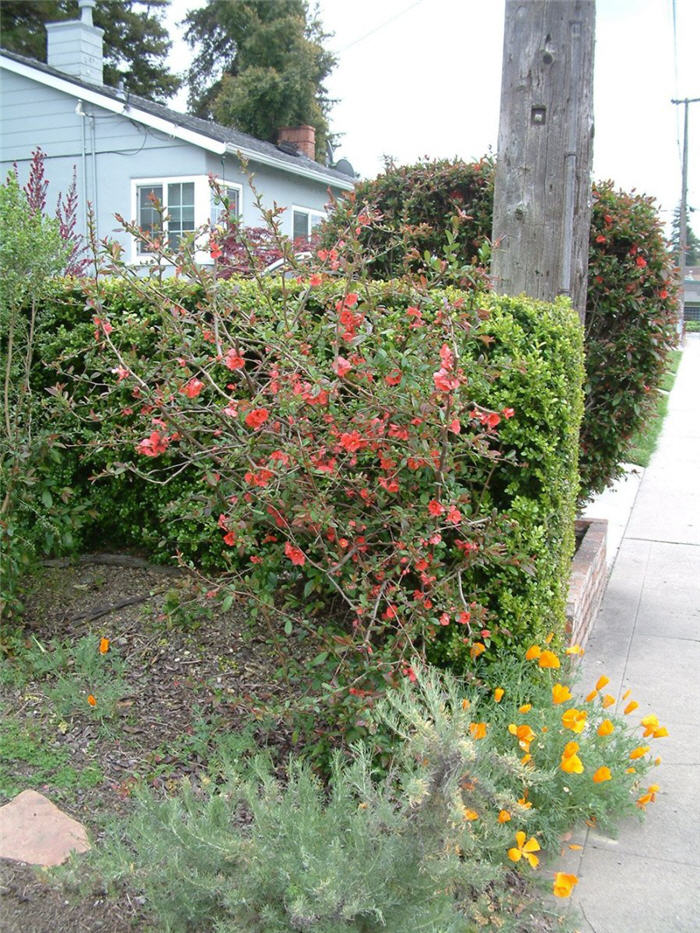| Botanical Name: Chaenomeles speciosa | |
| Common Name: Flowering Quince |

-
Anatomy
-
Culture
-
Design
Plant Type
Shrub
Height Range
3-6', 6-12'
Flower Color
Red
Flower Season
Spring
Leaf Color
Green
Bark Color
Brown
Fruit Color
Green, Yellow
Fruit Season
Fall
Sun
Full, Half
Water
Low, Medium
Growth Rate
Moderate
Soil Type
Sandy, Clay, Loam, Rocky, Unparticular
Soil Condition
Average, Rich, Poor, Well-drained, Moist, Dry
Soil pH
Acid, Neutral, Basic
Adverse Factors
Thorns/Spines
Design Styles
English Cottage, Japanese, Mediterranean
Accenting Features
Espalier, Showy Flowers
Seasonal Interest
Spring
Location Uses
Background, Shrub Border, Foundation, Walls / Fences
Special Uses
Hedge
Attracts Wildlife
Birds
Information by: Stephanie Duer
Photographer:
Photographer:
-
Description
-
Notes
Flowering quince is a dense, broad-rounded, deciduous shrub with often-tangled, spiny, gray-brown twigs. It typically grows to 6 to 10 feet tall and as wide. Scarlet to red (less frequently pink or white) five-petaled flowers bloom before the leaves fully unfold in early spring. Flowers are followed by hard, dot-speckled, yellowish-green fruits (2 to 3 inches across) that may acquire red tinges as they mature in autumn. Quinces are edible, but usually are considered too bitter to be eaten directly from the shrub, but are used in preserves and jellies. It has finely-toothed, oval to oblong, glossy dark green leaves, which emerge i nthe spring with a bronzy cast, but have no fall color.
Grow in average, medium moisture, well-drained soil in full sun to part shade. Best flowering occurs in full sun. Adapts to a wide range of soil conditions, but prefers well-drained loams. Established plants will tolerate dryish soils, though prolonged drought will affect fruit quality. Plants bloom on old growth, so avoid heavy pruning. Prune selectively as needed in spring after flowering to control size and stimulate growth of flowering spurs which will improve bloom for the following year (although such pruning will reduce fruit production for the current year). Promptly remove root suckers to control possible spread.